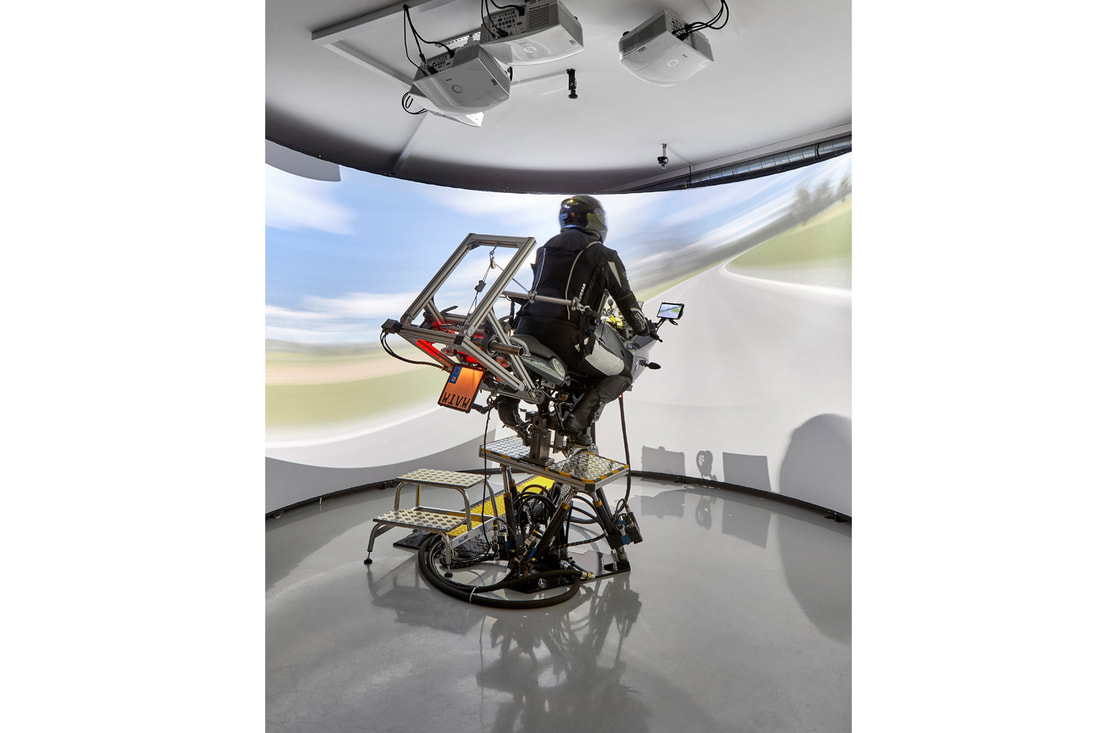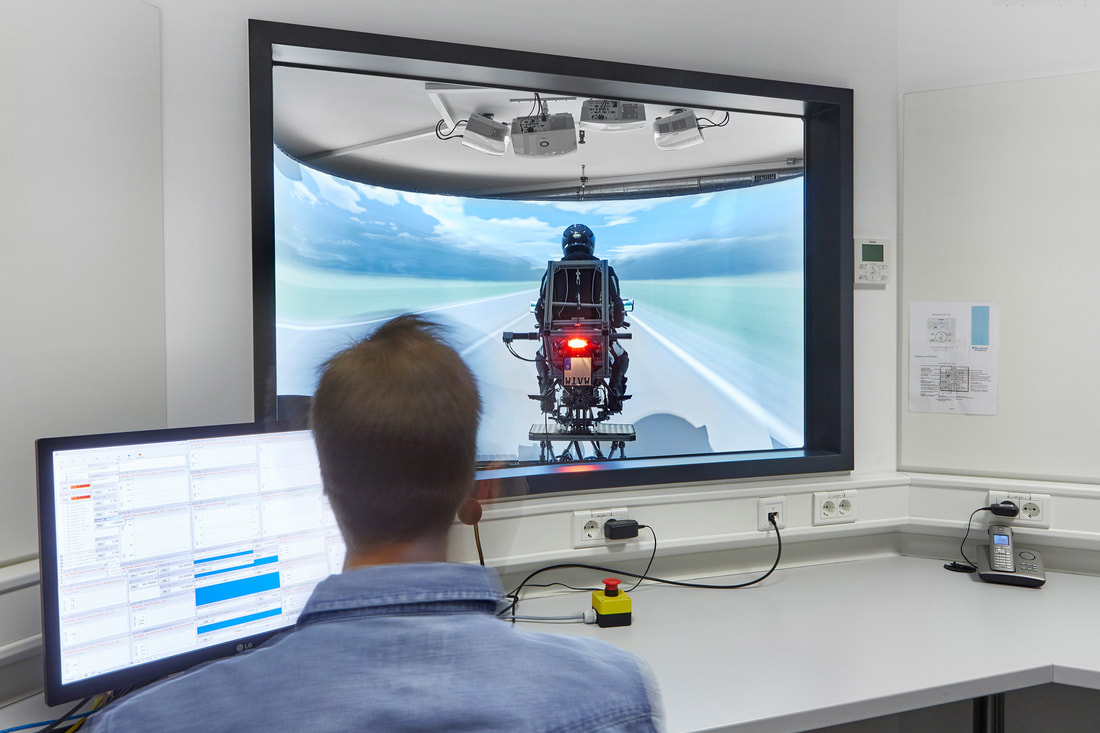|
The general aim of the Connected Motorcycle Consortium (CMC) is to make Powered Two-Wheelers (PTW) part of the future connected mobility. To achieve that, CMC is not solely focusing on technical aspects of this process, but ensures the early integration of the rider. What is a suitable warning timing? For instance, any assistance system that does not intervene automatically requires a reliable communication from the PTW to the rider (i.e., any kind of warning) to ensure that he or she can take appropriate action. Currently, there is no universal and reliable PTW-rider specific information regarding a suitable warning timing, because we lack knowledge about riders’ detection and processing capabilities of a warning while riding. Furthermore, these capabilities may be influenced by a lot of different factors, such as vehicle ergonomics, rider workload etc. Yet, the decision on warning design and timing is vital to ensure a safety benefit of the application, to reduce the number of perceived false positive alarms and increase acceptance of the application among riders. Study by means of an advanced riding simulator To address this important aspect, CMC investigates PTW rider-specific reaction times towards warnings in a user study on a riding simulator. This DESMORI dynamic motorcycle riding simulator at WIVW is equipped with a mockup mounted on a 6 degrees of freedom hydraulic platform for vestibular feedback. The mockup enables the rider to interact with fully realistic controls, such as usual handlebar, brake lever/ pedal, clutch, gear selector, etc. Helmet-integrated headphones or shakers attached to the individual helmets are used for auditory feedback. The rider steers the motorcycle through a combination of steering torque (with torque feedback up to 80 Nm) and induced roll torque by shifting his/ her weight. The cylindrical screen enables 220° horizontal field of view. The instrument cluster – same as the mirrors – is a TFT screen which permits to flexibly provide various types of visual warnings. Emperical results This test environment allows to analyze rider behavior in scenarios, which were previously identified by CMC’s Feature Team Accidentology, in a safe and controlled environment with the major aim to provide empirical evidence for warning design, warning timing and the creation of rider behavior models that serve as input for the safety applications. Concretely: In order to design those applications, you would need to know how long it takes before a rider realises that there is a warning. For example, if noticing the warning already takes one second, and then the rider needs another second before actually taking avoiding action, the warning needs to be issued by the application already two seconds before the minimum required ‘technical’ time & distance needed to avoid the collission – a very critical path to make some applications work. |
Archives
May 2024
|
COPYRIGHT 2024 Connected Motorcycle ConsortiumContact Us |
|



 RSS Feed
RSS Feed